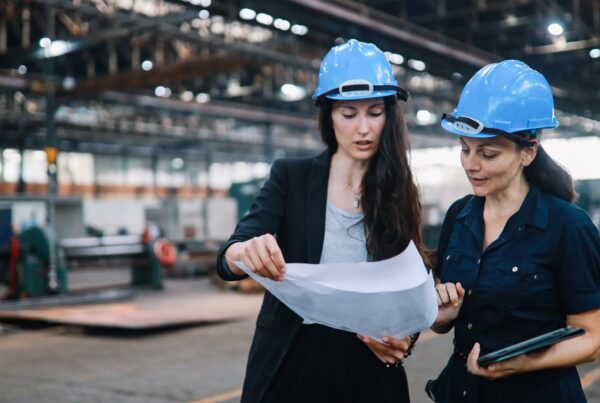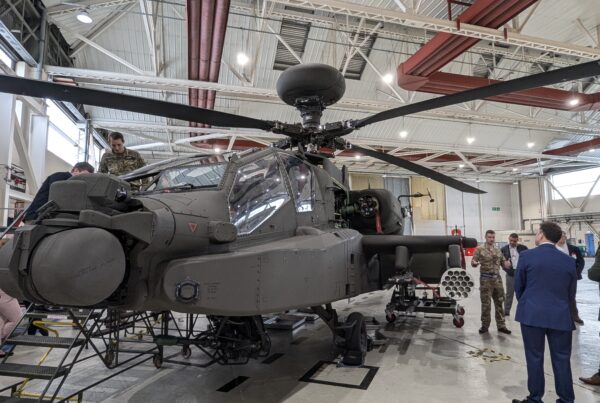In the world of innovation and technological advancement, shipbuilding stands as a beacon of human ingenuity. Yet, beneath the surface of this industry lies a network of interconnected lessons, shared practices, and mutual inspiration with other sectors such as aerospace, offshore, and beyond. Below we look into the parallels between these industries, exploring the technologies, practices, and opportunities that pave the way for cross-industry collaboration and innovation.
Parallels Between Shipbuilding and Other Industries
Structural Integrity and Extreme Environments: Shipbuilding, aerospace, and offshore industries all involve the construction of vessels, structures, and equipment designed to withstand harsh and dynamic environments. Ships must navigate the unpredictable forces of the open sea, enduring corrosive saltwater, extreme temperatures, and the relentless pounding of waves. Similarly, offshore platforms are subjected to harsh marine conditions, including high winds, waves, and corrosive seawater, while aerospace vehicles must contend with atmospheric flight conditions, such as rapid changes in pressure, temperature variations, and aerodynamic stresses. In each case, ensuring the structural integrity and reliability of vessels, platforms, and aircraft is paramount, requiring meticulous design, engineering, and materials selection.
Complex Systems Integration: Modern ships, offshore platforms, and aerospace vehicles are equipped with complex systems and subsystems that must be seamlessly integrated for optimal performance. From propulsion and navigation systems to communication, safety, and environmental control systems, the coordination and synchronisation of these systems are critical for operational effectiveness and safety. Shipbuilders, offshore engineers, and aerospace specialists face similar challenges in integrating diverse technologies while balancing weight, space constraints, and operational requirements.
Regulatory Compliance and Safety Standards: The maritime, aerospace, and offshore industries are subject to stringent regulatory frameworks and safety standards aimed at ensuring the well-being of personnel, protecting the environment, and maintaining operational integrity. Whether it’s complying with International Maritime Organization (IMO) regulations for ship design and operation, adhering to Federal Aviation Administration (FAA) guidelines for aircraft certification, or following industry standards for offshore platform design and operation, regulatory compliance is a top priority. Close collaboration between designers, engineers, regulators, and industry stakeholders is essential to meet and exceed these standards and uphold the highest levels of safety and environmental stewardship.
Innovation and Technological Advancement: Shipbuilding, aerospace, and offshore industries are at the forefront of technological innovation, driving advancements in materials science, propulsion systems, automation, and digitalisation. From the development of lightweight composite materials to the implementation of advanced propulsion technologies, each industry continually pushes the boundaries of what is possible. Moreover, the adoption of digital twin technology, predictive analytics, and artificial intelligence is revolutionising maintenance practices, optimising performance, and enhancing safety across maritime, aerospace, and offshore applications.
Global Supply Chain Management: Similarly, these industries rely on complex global supply chains spanning multiple countries and continents. From sourcing raw materials and components to coordinating manufacturing, assembly, and logistics, effective supply chain management is essential for ensuring timely delivery, cost efficiency, and quality control. However, the globalisation of supply chains also introduces challenges such as geopolitical risks, supply chain disruptions, and fluctuations in demand, requiring robust risk management strategies and contingency plans to mitigate these challenges and ensure operational resilience.
By recognising and leveraging these parallels between shipbuilding, aerospace, and offshore industries, organisations can foster cross-industry collaboration, drive innovation, and accelerate progress toward a safer, more sustainable future.
Cross-Industry Technologies and Practices
In the pursuit of excellence, professionals in the shipbuilding, aerospace, and offshore industries continually push the boundaries of innovation. Technologies such as additive manufacturing, autonomous systems, and AI technologies have revolutionised production processes, enhancing efficiency, reliability, and safety across industries.
Additive Manufacturing (AM): Additive manufacturing, otherwise known as 3D printing, has revolutionised production processes across the maritime and respective industries. By layering materials to build complex geometries, AM enables the rapid prototyping of components, customisation, and the production of lightweight yet durable parts. Whether it’s printing components, interiors, or equipment, additive manufacturing offers flexibility, cost-effectiveness, and design freedom, leading to reduced lead times and enhanced efficiency.
Autonomous Systems and Robotics: The adoption of autonomous systems and robotics is transforming operations across shipbuilding, aerospace, and offshore industries. From autonomous ships and drones to robotic arms and subsea vehicles, these technologies enhance efficiency, safety, and productivity while reducing the need for human intervention in hazardous environments. Whether it’s conducting inspections, surveying remote areas, or performing maintenance tasks, autonomous systems and robotics offer scalability, precision, and cost savings, enabling organisations to optimise operations and minimise downtime.
Digital Twin Technology: Digital twin technology, which creates virtual replicas of physical assets, is revolutionising asset management, predictive maintenance, and performance optimisation across these sectors. By capturing real-time data from sensors, equipment, and operational systems, digital twin enables organisations to monitor asset health, identify potential issues, and simulate scenarios to optimise performance and mitigate risks. Whether it’s monitoring ship propulsion systems, predicting aircraft component failures, or optimising offshore platform operations, digital twin technology enhances reliability, efficiency, and safety while reducing maintenance costs and downtime.
Read our blog “Digital Twin in Maritime: Revolutionising Ship Design, Operation, and Maintenance” to learn more.
By embracing these shared technologies and practices, shipbuilders, aerospace engineers, and offshore specialists can leverage collective expertise, drive innovation, and accelerate progress toward in their respective industries.
Opportunities for Knowledge Exchange and Innovation
Cross-industry collaboration presents a wealth of opportunities for knowledge exchange and innovation. By fostering interdisciplinary dialogue and partnerships, shipbuilders can leverage insights from aerospace and offshore sectors to enhance design optimisation, streamline manufacturing processes, and integrate state-of-the-art technologies.
The opportunities for knowledge exchange and innovation between shipbuilding, aerospace, and offshore industries are vast and multifaceted. By embracing interdisciplinary collaboration, joint research and development initiatives, technology transfer and adoption, and shared regulatory and environmental challenges, organisations can unlock new opportunities, drive collective progress, and shape the future of maritime, aerospace, and offshore industries for generations to come.
For instance, lessons learnt from aerospace in aerodynamics and structural optimisation can inform the design of more fuel-efficient ships, while offshore expertise in deep-sea exploration and subsea robotics can inspire advancements in underwater inspection and maintenance techniques. Likewise, the maritime industry’s expertise in navigating regulatory frameworks and managing logistics can offer valuable insights to aerospace and offshore counterparts expanding into new markets or territories.
Cross-Industry Lessons to be Learnt
Embracing a culture of continuous learning and adaptation is paramount for shipbuilders seeking to thrive in an ever-evolving landscape. By studying the successes and challenges of other comparable industries, professionals can gather valuable insights in innovation, risk management, and resilience.
One such lesson is the importance of embracing disruptive technologies and embracing a mindset of experimentation and iteration. From the adoption of electric propulsion systems to the integration of artificial intelligence in vessel operations, shipbuilders must remain agile and forward-thinking to stay ahead of the curve.
Moreover, fostering a culture of collaboration and knowledge sharing within and beyond the maritime sector is essential for driving collective progress and addressing global challenges such as climate change, resource depletion, and maritime safety.
At Marine People, we recognise the interconnected nature of industries and the boundless potential for cross-industry collaboration and innovation. Whether you’re a client seeking professionals to fill vacancies or an industry professional looking for new opportunities, we invite you to join us in shaping the future of shipbuilding.
Eager for more maritime news, articles, and top tips to elevate your career in shipbuilding? The adventure doesn’t end here! Navigate to the Marine People blog page for more knowledge, industry updates, and invaluable insights that will propel your success.








